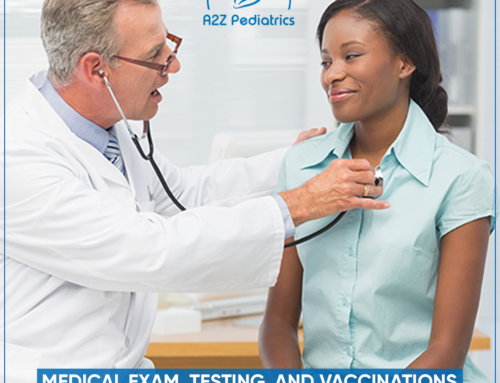The goal of a school physical is to ensure that your child is healthy and safe for the school year. Annual visits with the Oakbrook pediatrics are an excellent way to keep track of your child’s health, obtain official growth statistics, and personally discuss any concerns, questions, or changes to watch for in the coming year.
What is a school physical?
The pediatrician will measure your child’s height, weight, and blood pressure during the physical. In addition to examining your child’s eyes, flexibility, heart, lungs, ears, nose, and throat, a pediatrician may also feel for abdominal abnormalities. During the physical exam, your paediatrician will also administer any vaccinations required by the school.
Your pediatrician will collect additional information about your family’s medical history to accurately assess your child’s health. Both the physical examination and the medical history are essential. Past illnesses, surgeries, or conditions, such as asthma or chest pain, help diagnose and prevent complications.

Why is so much information required about your child’s medical history?
- Typically, the medical history section consists of questions such as:
- Does anyone in the family suffer from serious illnesses?
- Any conditions previously identified in the child (asthma, diabetes, etc.)
- Has the child had any previous injuries or surgeries?
- Has your child ever fainted, felt dizzy, experienced chest pain, or had difficulty breathing during physical activity?
- Does your child take any medications currently? If yes, please explain why.
Providing this information may be an essential component of the school physical. It would be ideal if your child assist you in answering these questions, so they are aware of their medical history. Doctors consider this information when determining whether a child has any health conditions.
Our pediatricians closely monitor the growth of our children to ensure that they reach all developmental and development benchmarks. A school physical may be necessary for your child to join a sport or academic team. Our pediatricians can assist in ensuring that your child fulfills these requirements. Physical examinations are typically brief, provide a clean bill of health, and satisfy school requirements. In addition, physical examinations allow doctors to confirm that your child has received all necessary vaccinations to prevent disease. Vaccines protect others from illness, so they are essential to your child’s health and other children’s health. However, older children who participate in school sports must undergo a physical examination.
What does a school physical consist of, and is it invasive?
A school physical is noninvasive and covers all required health measures. It includes:
-
Vitals check
To determine your child’s vital signs, we will check their pulse and blood pressure. In addition to assessing height and weight, we’ll also record growth spurts and weight changes, which can put an additional strain on joints, muscles, and bones.
-
Eye exam
Your child’s eyes are examined to check for proper vision and determine whether prescription lenses are needed or if your child’s current prescription needs to be changed.
-
Fitness assessment
Our next step is to examine your child’s heart, lungs, abdomen, ears, nose, and throat. The doctor will check the patient’s cardiovascular system and recommend any restrictions on physical activity.
-
Joints and flexibility check
Our team will evaluate your child’s strength, flexibility, posture, and joints to determine where the child is at risk of injury and provide exercises and tips for building a healthier body.
Our pediatricians will inform you if anything is concerning or requires further evaluation during the screening. The goal of school physicals at A2Z Pediatrics / Oakbrook Pediatrics is to make the medical examination as pleasant and stress-free as possible. If your child is at ease, a more accurate evaluation is possible.
How do school physicals change throughout a child’s development?
School physicals have the same purpose regardless of your child’s age, but there are certain aspects to anticipate as your child matures. Children in preschool and kindergarten should receive all required immunizations before starting school. Furthermore, at this age, children learn what to expect at the doctor’s office, what questions to ask, and how to prioritise their health.
Exam-taking elementary school students learn about their bodies and how to be healthy. Additionally, children are thrilled to see how much they have changed since their last visit.
Exams become increasingly difficult in middle school. The adolescent years between the ages of 11 and 14 are a time of significant change, so let the doctor explain any changes. Your doctor will provide you with as much knowledge, strength, and self-assurance as possible during this period of significant change.
Students in high school are nearly ready for their annual wellness exams. The doctor’s role will provide them with the information, resources, and support they need to make the best decision.
During your visit, we will be able to answer your questions and provide you with medical advice. Your pediatrician may discuss children’s health and safety, disease prevention, nutrition, and physical fitness. In addition to school issues, behavioral issues, and learning difficulties, the pediatrician can also provide counseling. Learn about school physicals and why they are essential with your child’s pediatrician at Oakbrook Pediatrics in Downers Grove, IL, or call (630) 971-6511 for more information.

Oakbrook Pediatrics & Adolescent Center
3825 Highland Ave, Tower 1 #2C
Downers Grove, IL 60515
Email:info@oakbrookpediatrics.com
Phone: (630) 971-6511




